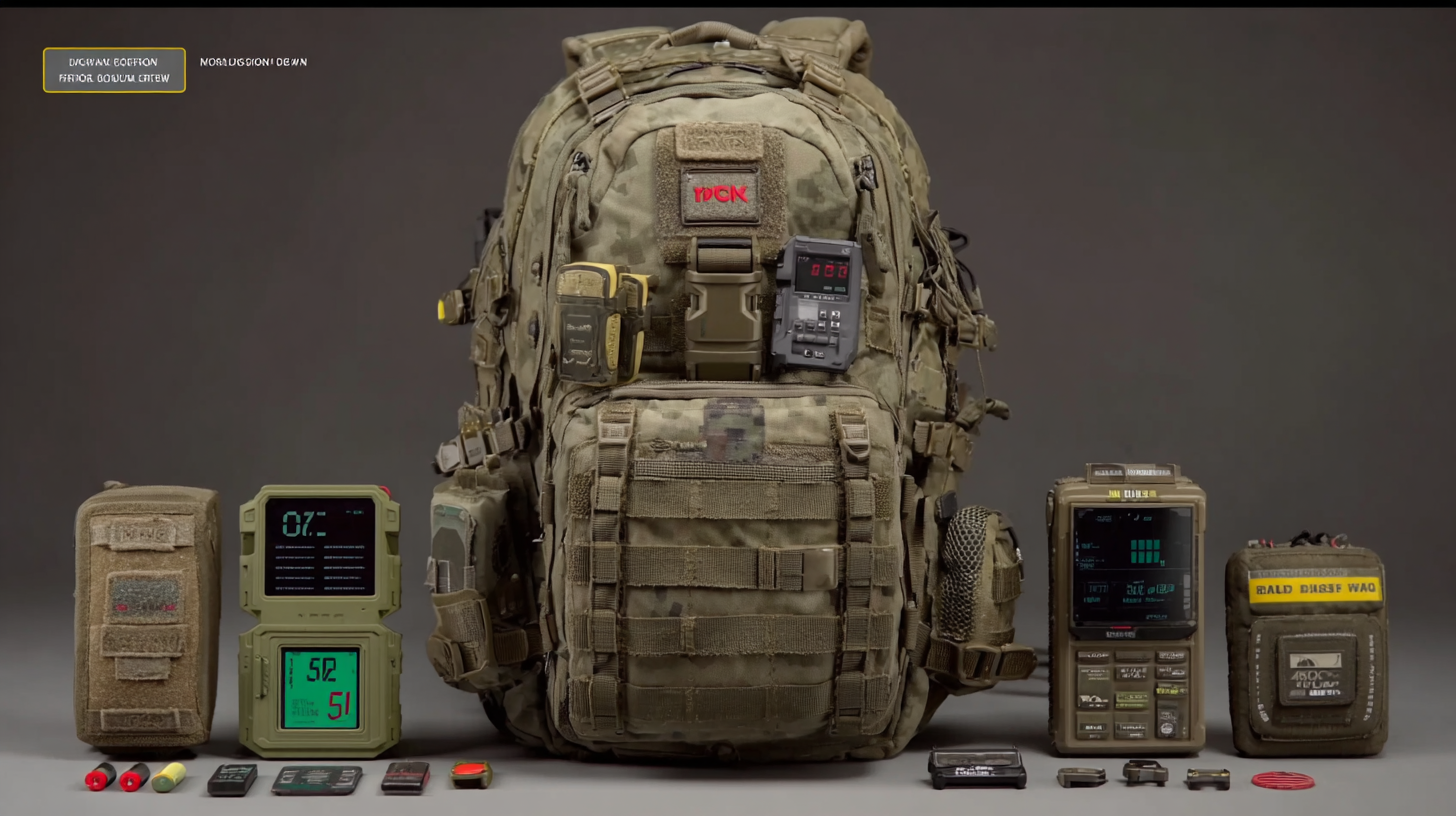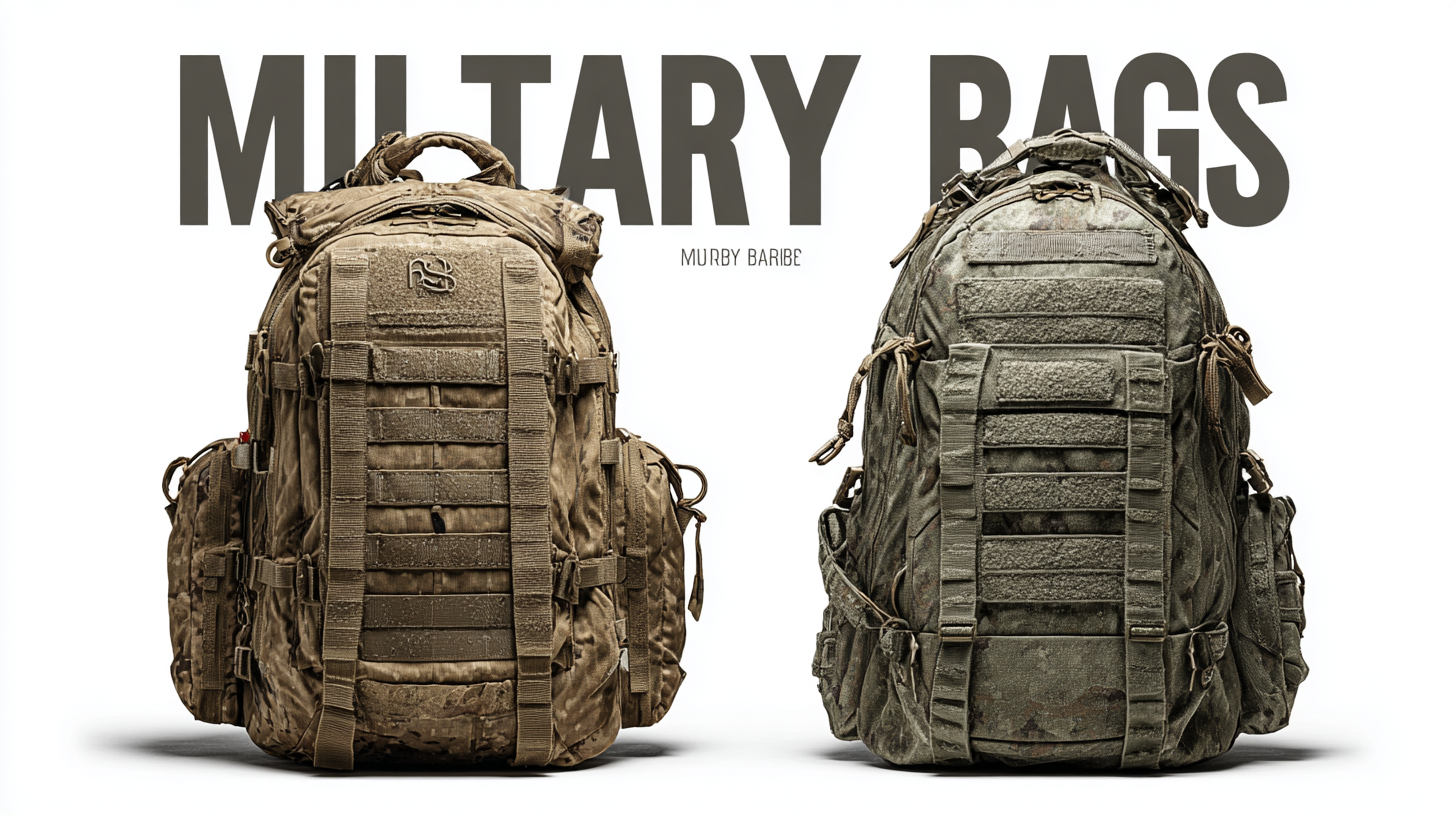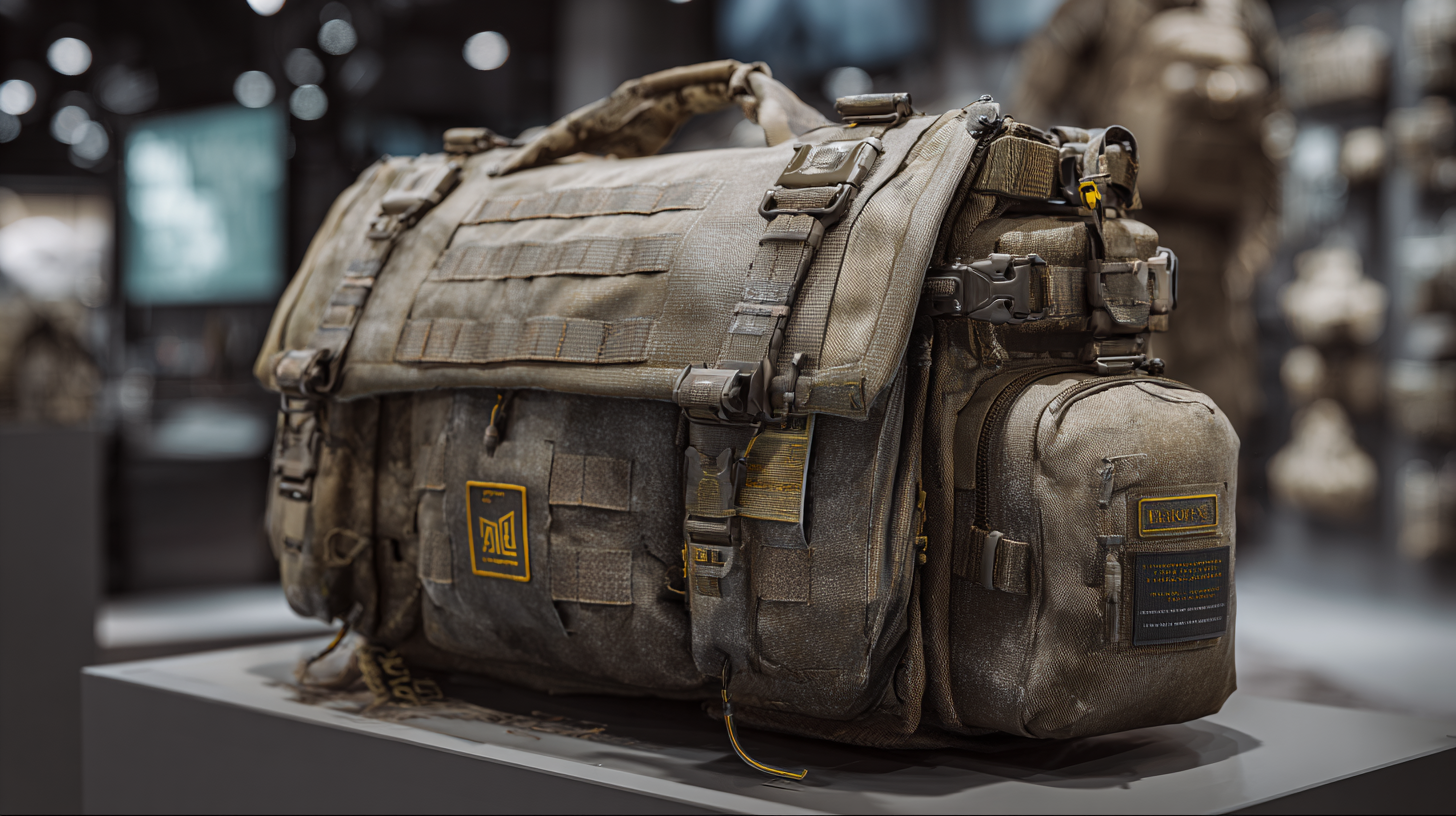Exploring the Future of Best Military Bags in 2025 Technology Trends and Key Strategies for Success
In recent years, the military bags industry has witnessed significant transformations driven by advancements in technology and changing consumer demands, positioning itself for a promising future in 2025. According to a market research report by Grand View Research, the global military backpack market is projected to reach USD 2.13 billion by 2025, with a compound annual growth rate (CAGR) of 3.2%. This growth is fueled by the increasing need for durable, multi-functional bags that can withstand various environmental conditions, emphasizing qualities that highlight "China manufacturer, global sharing, quality we can trust."

As defense sectors evolve, incorporating innovative materials and smart technologies into military bags, manufacturers must adopt key strategies focused on sustainability, customization, and enhanced user experience to seize market opportunities. By exploring these emerging trends and strategies, stakeholders can better navigate the complexities of the military bags landscape and establish themselves as leaders in this competitive arena.
Understanding the Importance of After-Sales Service in Military Bags
In the competitive landscape of military bags, after-sales service emerges as a pivotal component that can significantly influence customer satisfaction and brand loyalty. For military professionals and outdoor enthusiasts, a durable and functional bag is only part of the equation; the support they receive after making a purchase is equally crucial. Companies that prioritize robust after-sales service empower their clients by providing assistance with product maintenance, warranty claims, and replacement parts, ensuring that their bags remain reliable companions in demanding environments.
A strong after-sales service strategy can also serve as a key differentiator in a saturated market. Brands that offer comprehensive care packages, including extended warranties and dedicated customer support, can cultivate lasting relationships with their users. This not only enhances the overall user experience but encourages word-of-mouth referrals and repeat business. As we move towards 2025 and the evolving landscape of military bags technology, the importance of after-sales service will only increase, making it essential for brands to invest in training their support teams and streamlining their service processes to meet the high expectations of their clientele.
Analyzing Repair Costs and Their Impact on Military Gear Longevity
As military operations continue to evolve, the longevity of military gear is increasingly influenced by
repair costs. According to a
2022 report by the Defense Logistics Agency, maintaining and repairing military equipment can consume up to
30% of the total lifecycle costs. This statistic underscores
the need for strategic investment in durable materials and design innovations that not only reduce repair
frequency but also extend the usability of essential gear.

Research indicates that investing in high-quality components
can lead to significant cost savings over time. For example, a comparative study published in the
Journal of Military Logistics suggests that by opting for
advanced composite fabrics, military backpacks could experience
a 50% reduction in repair incidents. This not only enhances
operational readiness but also ensures that soldiers have access to reliable equipment in critical situations.
Consequently, a focus on reducing total ownership costs through quality improvements is essential for military
decision-makers as they plan for the future of their supply chains.
Innovative Maintenance Strategies for Enhanced Military Bag Durability
As we delve into the future of military bags by 2025, innovative maintenance strategies are becoming crucial for enhancing their durability and functionality. One key approach is the implementation of advanced materials engineered to withstand harsh environments. These materials not only provide water and abrasion resistance but also reduce the overall weight of the bags, improving soldiers' mobility during missions.
**Tips:** Regularly inspect and clean bags using appropriate methods to maintain their integrity. Utilizing protective sprays can enhance water resistance while ensuring that zippers and clasps are lubricated for smoother operation. Additionally, integrating modular designs can allow users to replace specific components without needing to purchase an entirely new bag.
Furthermore, embracing smart technology in military bags presents an opportunity for better maintenance. Real-time monitoring systems can alert users to wear and tear, prompting timely repairs before minor issues escalate. This proactive approach not only prolongs the lifespan of the bags but also ensures that military personnel are always equipped with reliable gear.
**Tips:** Consider investing in bags equipped with embedded sensors that track usage patterns. This data can inform maintenance schedules and highlight any potential issues, enabling a more strategic approach to care and upkeep.

Leveraging Technology for Efficient After-Sales Support in Military Equipment
The landscape of military equipment is rapidly evolving, and efficient after-sales support is becoming critical in enhancing operational readiness and user satisfaction. Leveraging advanced technology is key to streamlining this process in 2025. With innovations such as AI-driven chatbots and augmented reality (AR) applications, manufacturers can provide real-time assistance and guidance to military personnel. These tools can aid in troubleshooting, ensuring that soldiers can maximize their gear's performance without delay.
Moreover, the integration of IoT (Internet of Things) capabilities into military bags themselves can drastically improve after-sales service. Smart bags equipped with sensors can monitor the condition of equipment, notifying users when maintenance is needed or if any part is malfunctioning. This proactive approach not only reduces downtime but also enhances safety, allowing soldiers to focus on their missions rather than potential gear failures. As the military continues to embrace these technologies, the importance of robust after-sales support systems will only become more pronounced, creating a significant impact on overall mission success.
Exploring the Future of Best Military Bags in 2025: Technology Trends and Key Strategies for Success
| Dimension |
Description |
2025 Trends |
Key Strategies |
| Material Technology |
Advancements in lightweight and durable materials for military bags. |
Use of graphene and other composites for enhanced durability. |
Invest in R&D for innovative material solutions. |
| Smart Technology |
Integration of smart features such as GPS and tracking devices. |
Increased demand for connectivity and smart functionalities. |
Partnership with tech firms for seamless integration of smart solutions. |
| Sustainability |
Focus on eco-friendly and sustainable manufacturing practices. |
Growing trend towards biodegradable materials in production. |
Transition to circular economy strategies in production and packaging. |
| After-Sales Support |
Strengthening customer service and repair support for military bags. |
Increased reliance on digital platforms for support and feedback. |
Implement comprehensive customer relationship management (CRM) systems. |
| Combat Readiness |
Enhancements in the functionality of military bags for field use. |
Trends toward modular and customizable equipment to match various missions. |
Develop tailored solutions based on specific mission needs and user feedback. |
Future Trends in Military Bag Design Focusing on Service and Repair Needs
As we look towards 2025, the landscape of military bag design is poised for transformative changes that reflect the evolving needs of service and repair. The increasing emphasis on the "Right to Repair" for military personnel is setting a precedent for manufacturers to create bags that
not only support operatives in the field but also facilitate easier maintenance and upgrades. This shift is essential as it addresses the broader implications of sustainability and operational readiness within military logistics.
In light of emerging technologies and the ongoing challenges highlighted by the current maintenance workforce dilemma, military bags will need to embrace innovative materials that withstand harsh environments while allowing for straightforward repairs or replacements. Such features could significantly reduce downtime and enhance the utility of these bags, ensuring they meet the rigorous demands of modern warfare. As military forces around the globe adapt to these trends, the feedback from personnel using these products will be invaluable in guiding design strategies, which ultimately will lead to a new generation of military bags that prioritize functionality, durability, and ease of repair.

Home
About Us
Products
FAQ
News
Contact Us






 Hunting And Shooting Bag LSH
Hunting And Shooting Bag LSH Tactical Military Bag & Vest LST
Tactical Military Bag & Vest LST Archery Bag LSC
Archery Bag LSC Fishing Bag LSF
Fishing Bag LSF Others LSB
Others LSB

